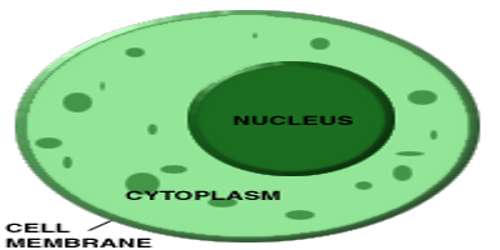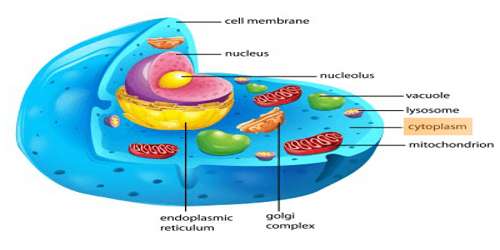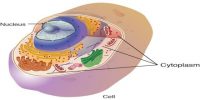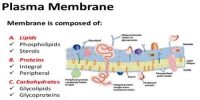Cytoplasm is the semi-fluid substance of a cell that is present within the cellular membrane and surrounds the nuclear membrane. It maintains the shape and consistency of the cell. Outside the nucleus, the part of protoplasm, which is surrounded by the cell membrane, is known as cytoplasm. It is composed of diverse organic and inorganic compounds like water, diverse nucleic acid and enzymes. The outer area of cytoplasm is more concentrate, less granular and hard, which is called Ectoplasm, and the central area, which is less concentrated, called Endoplasm.

The cytoplasm is made of 70% – 90% water and is colorless generally. Different organelles like plastids, mitochondria, endoplasmic reticulum, ribosome, golgi bodies, lysosome, centrosome and different nonliving substances are present in the cytoplasm.
Functions:
(a) to hold dissimilar organelles and
(b) to perform some organic functions.
(c) aids in the movement of the different cellular elements.
(d) transports the products of cellular respiration.













